Section 1.1 Section 1.2 Section 1.3 - The Student Room
Section 1.1 Section 1.2 Section 1.3 - The Student Room
Section 1.1 Section 1.2 Section 1.3 - The Student Room
Create successful ePaper yourself
Turn your PDF publications into a flip-book with our unique Google optimized e-Paper software.
SECTION 5<br />
a Pentane has the strongest intermolecular forces and<br />
hence the highest boiling point. Dimethylpropane has<br />
the weakest intermolecular forces and hence the<br />
lowest boiling point.<br />
b <strong>The</strong> molecules of pentane, because it is a straight<br />
chain alkane, can approach closely to each other<br />
which increases the opportunities for<br />
instantaneous–induced dipole interactions and hence<br />
stronger intermolecular attractions. Methylbutane has<br />
one methyl side chain and so it is more difficult for<br />
these molecules to approach each other and<br />
instantaneous–induced dipole interactions are weaker.<br />
Dimethylpropane has two methyl side-chains and so it<br />
is even more difficult for molecules of this compound<br />
to approach each other.<br />
4 <strong>The</strong> strength of instantaneous dipole–induced dipole<br />
forces between molecules increases as the relative<br />
molecular masses of the molecules increase. To be sure<br />
that the higher boiling point of the polar substance is<br />
due only to the increased strength of dipole–dipole<br />
attractions it will be necessary to ensure that the<br />
instantaneous dipole–induced dipole forces in both<br />
polar and non-polar substances are of similar strength.<br />
This can be done by comparing substances of similar<br />
molecular mass.<br />
5 a A and D; C and G.<br />
b A and G have the stronger intermolecular forces<br />
compared to D and C, respectively.<br />
6 Polarity will occur as follows:<br />
C-F; H-Cl; H-N; C-O with charges in the order d+ d– in<br />
each case.<br />
7 CHCl 3<br />
, CH 3<br />
OH, (CH 3<br />
) 2<br />
CO, cis-1,2-difluoroethene and<br />
1,2-dichlorobenzene possess dipoles.<br />
8 a i Eighteen<br />
ii <strong>The</strong> attractions will be similar.<br />
iii H 2<br />
S has a permanent dipole. It is a bent molecule<br />
with two lone pairs. SiH 4<br />
does not have an overall<br />
permanent dipole as it is a symmetrical molecule.<br />
b Both compounds have similar instantaneous<br />
dipole–induced dipole forces. However, H 2<br />
S also has<br />
permanent dipole–permanent dipole attractions so its<br />
boiling point is higher than that of SiH 4<br />
.<br />
9 a Instantaneous dipole–induced dipole.<br />
b Instantaneous dipole–induced dipole.<br />
c Instantaneous dipole–induced dipole, permanent<br />
dipole–permanent dipole.<br />
d Instantaneous dipole–induced dipole.<br />
e Instantaneous dipole–induced dipole, permanent<br />
dipole–permanent dipole.<br />
f Instantaneous dipole–induced dipole.<br />
g Instantaneous dipole–induced dipole.<br />
h Instantaneous dipole–induced dipole, permanent<br />
dipole–permanent dipole.<br />
<strong>Section</strong> 5.4<br />
1 a As the temperature rises, solids and liquids expand.<br />
<strong>The</strong> temperature increase raises the kinetic energy of<br />
the particles present. In solids, the rotational and<br />
vibrational energy increases. In liquids, rotational,<br />
vibrational and translational energy increases. <strong>The</strong><br />
increases in vibrational and translational energy<br />
increase the volume occupied by the particles. As they<br />
occupy an increasing volume, the density of the solid<br />
or liquid decreases.<br />
b i When ice melts, much of the open, hydrogenbonded<br />
structure collapses. This enables the<br />
molecules to occupy less space so the density<br />
increases on melting.<br />
ii <strong>The</strong> boiling point of water is higher than<br />
expected, as more energy is needed to break the<br />
hydrogen bonding.<br />
iii <strong>The</strong> specific heating capacity of water is higher<br />
than expected, as more energy is absorbed by the<br />
water to break hydrogen bonds in the liquid.<br />
2 a i H 2<br />
O instantaneous dipole–induced dipole<br />
permanent dipole–permanent dipole<br />
hydrogen bonding.<br />
H 2<br />
S instantaneous dipole–induced dipole<br />
permanent dipole–permanent dipole.<br />
H 2<br />
Se instantaneous dipole–induced dipole<br />
permanent dipole–permanent dipole.<br />
H 2<br />
Te instantaneous dipole–induced dipole<br />
permanent dipole–permanent dipole.<br />
ii Intermolecular forces must be overcome when a<br />
liquid boils.<br />
Hydrogen bonding present between molecules of<br />
H 2<br />
O – but not between those of H 2<br />
S, H 2<br />
Se or H 2<br />
Te.<br />
Hydrogen bonding forces are much stronger than<br />
other intermolecular forces and so the boiling point of<br />
water is higher than that of the other hydrides.<br />
b <strong>The</strong> strength of instantaneous dipole–induced dipole<br />
and permanent dipole–permanent dipole attractions<br />
in a substance gets weaker as its relative molecular<br />
mass gets smaller. This produces a lower boiling point.<br />
<strong>The</strong> boiling point of H 2<br />
O should be lower than that of<br />
H 2<br />
S but it is in fact much higher. This suggests that,<br />
compared to H 2<br />
S, a different and much stronger type<br />
of intermolecular bonding exists in H 2<br />
O.<br />
c ii All have instantaneous dipole–induced dipole<br />
forces.<br />
iii <strong>The</strong> shape of the graph is nearly a straight line<br />
with positive slope. <strong>The</strong>re is no hydrogen<br />
bonding between the hydride molecules of<br />
Group 4. <strong>The</strong> increase in boiling points down the<br />
group is a result of their regularly increasing<br />
molecular masses.<br />
3 A, D, E and F<br />
4 a Hydrogen bonding will be present in NH 3<br />
, CH 3<br />
OH,<br />
and HF.<br />
b<br />
N H CH 3<br />
F<br />
H H O<br />
H<br />
H<br />
H<br />
H<br />
H CH 3 F<br />
F<br />
N<br />
O<br />
H H<br />
H<br />
175


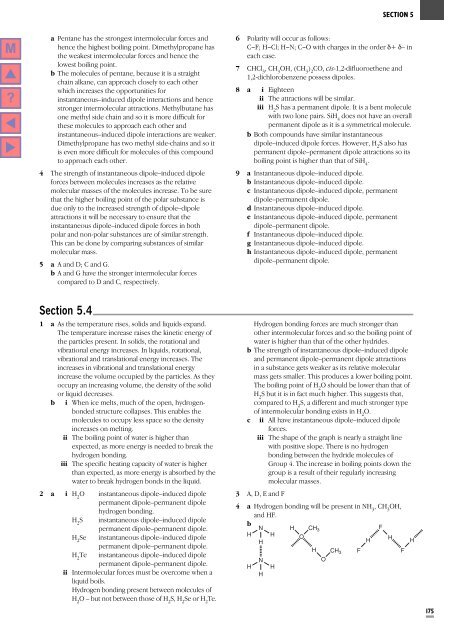
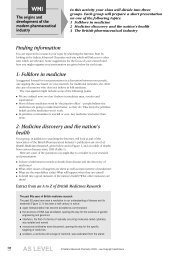
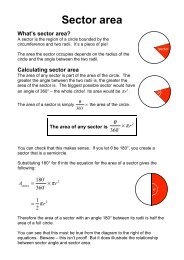
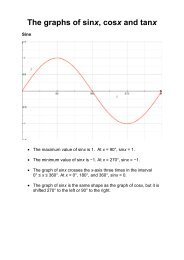
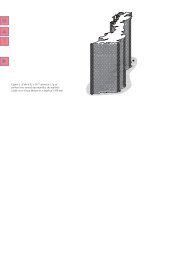

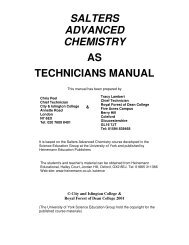


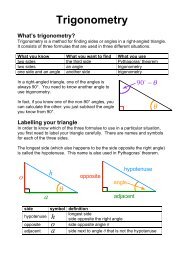
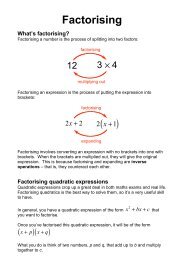
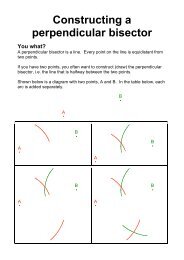

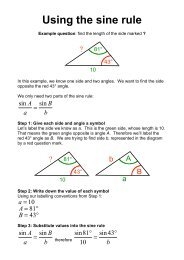
![ISI Web of Knowledge [v.4.10] - All Databases Results - Benjamin-Mills](https://img.yumpu.com/39253071/1/184x260/isi-web-of-knowledge-v410-all-databases-results-benjamin-mills.jpg?quality=85)